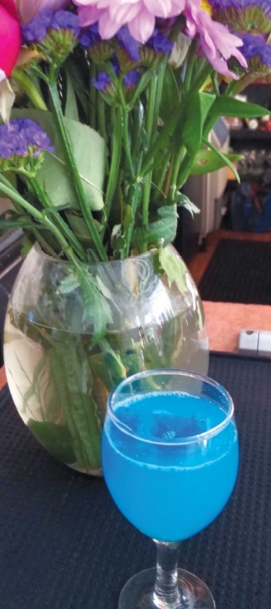ICE: SEPARATING THE GOOD FROM THE BAD
Crushed or cubed, spheres or squares, ice is the foundation of a good drink. Which begs the question, “Does ice matter?”
Indeed. Ice is what separates the good drinks from the bad, according to Francis Schott, cofounder and beverage director of New Brunswick’s newly rebranded Stage Left Steak (a sharpening of focus for the 25-year-old restaurant) and Catherine Lombardi, the Italian-American restaurant next door.
“In every drink you make that would be considered a cocktail, water is going to be an ingredient. How water gets into that drink is through ice and two processes: shaken or stirred.”
The quantity of ice used when a drink is shaken is critical to the result. Either the drink is stronger or weaker; the proportion varies according to the cocktail. When the bartender makes a drink, he or she tries to keep it within a narrow range of alcohol contents—usually somewhere around 3.5 ounces, depending on alcohol by volume, which becomes a 5-ounce drink when it’s run through ice. “How hard and long we shake is different depending on the drink and will affect the outcome of how much liquid is diluted into it,” Schott says.
The water source isn’t as critical as you might imagine, Schott says. Tap water in New Jersey comes from different sources, and has contrasting tastes. Some water is cleaner than other water. Yet, in the restaurant business, an equalizer exists. “Ice always goes through a filter, so how clean and clear [the water] is doesn’t matter,” Schott says.
“What tends to differ in bars is the shape and temperature of the ice, which is huge.”
How quickly ice melts and how much room it takes up in the glass are key to serving a satisfying drink. One-inch cubes are the perfect size and temperature—they don’t freeze as quickly as halfmoon– shaped ice, which means they don’t melt as quickly. In a whiskey on the rocks, 1-inch ice cubes leave more space between the cubes, allowing bartenders to put more whiskey in the glass. Half-moon cubes fit together better, leaving less space and less alcohol.
“There was a savings that was pitched to bartenders [by icemakers] that you can add less of a drink but still fill up the glass,” Schott says. “But now your drink is 60% water instead of 20% water.”
Size is also crucial. “When a place has cubed ice or big, slow-melting cubes or spheres, you can tell that place cares.” Bigger ice cubes melt slower, meaning your drink isn’t diluted. “Some bartenders use ice spears, so one long cube of ice, instead of cubes. Others use slow-melting spheres instead of slow-melting cubes. The aesthetics and clarity of ice are really appealing, but that part is purely visual.”
Raymond Keane, beverage director at The Kitchen Step in Jersey City, took house-made ice to the next level by crafting ice cubes that transform one cocktail into another. “I was thinking a flavored ice cube, but I wanted to push it a little further,” Keane says. He got the idea from his cousin’s transformer toys. “I thought, ‘[Cocktails] could definitely transform,’ so I started toying with the idea and realized there are a lot of cocktails that are very similar. Just remove one thing and add another.”
To make this work, Keane says, it’s imperative to find drinks with flavors that complement each other. Otherwise, the drink won’t taste good mid-transformation.
One of Keane’s first transformer cocktails begins as a Manhattan and then becomes a bourbon Negroni. The two drinks have similar ingredients, vermouth and orange peel. Keane creates the Manhattan, then adds flavored ice cubes that contain the missing ingredients required to transform it into the second drink. As the ice melts into the Manhattan glass, the drink slowly changes flavors. By the time the ice fully melts, the Manhattan is a bourbon Negroni.
Another popular transformer drink at Kitchen Step is the Gin Lemonade that becomes an Aviation; both cocktails are centered on gin.




